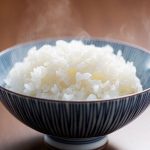【ほんとに怖い…】加工肉の発がん性について

こんにちは!
リハビリデイサービスあおやま筑西店の飯田です!
今回は【加工肉の発がん性について】についてお話し致します!
今回は、IARC (International Agency for Research on Cancer)で発表された論文を要約したものをご紹介致します。
※IARC(International Agency for Research on Cancer、国際がん研究機関)は、WHO(世界保健機関)のがんに特化した専門的な機関です。 IARCの目的は、がん研究における国際的な協力を促進することです。
↓ ↓ ↓ ↓ ↓
Lyon, France, 26 October 2015 – The International Agency for Research on Cancer (IARC), the cancer agency of the World Health Organization, has evaluated the carcinogenicity of the consumption of red meat and processed meat.
Red meat
After thoroughly reviewing the accumulated scientific literature, a Working Group of 22 experts from 10 countries convened by the IARC Monographs Programme classified the consumption of red meat as probably carcinogenic to humans (Group 2A), based on limited evidence that the consumption of red meat causes cancer in humans and strong mechanistic evidence supporting a carcinogenic effect.
This association was observed mainly for colorectal cancer, but associations were also seen for pancreatic cancer and prostate cancer.
Processed meat
Processed meat was classified as carcinogenic to humans (Group 1), based on sufficient evidence in humans that the consumption of processed meat causes colorectal cancer.
Meat consumption and its effects
The consumption of meat varies greatly between countries, with from a few percent up to 100% of people eating red meat, depending on the country, and somewhat lower proportions eating processed meat.
The experts concluded that each 50 gram portion of processed meat eaten daily increases the risk of colorectal cancer by 18%.
“For an individual, the risk of developing colorectal cancer because of their consumption of processed meat remains small, but this risk increases with the amount of meat consumed,” says Dr Kurt Straif, Head of the IARC Monographs Programme. “In view of the large number of people who consume processed meat, the global impact on cancer incidence is of public health importance.”
The IARC Working Group considered more than 800 studies that investigated associations of more than a dozen types of cancer with the consumption of red meat or processed meat in many countries and populations with diverse diets. The most influential evidence came from large prospective cohort studies conducted over the past 20 years.
Public health
”These findings further support current public health recommendations to limit intake of meat,” says Dr Christopher Wild, Director of IARC. “At the same time, red meat has nutritional value. Therefore, these results are important in enabling governments and international regulatory agencies to conduct risk assessments, in order to balance the risks and benefits of eating red meat and processed meat and to provide the best possible dietary recommendations.”
Q&A on the carcinogenicity of the consumption of red meat and processed meat
Q. What do you consider as red meat?
A. Red meat refers to all mammalian muscle meat, including, beef, veal, pork, lamb, mutton,
horse, and goat.
Q. What do you consider as processed meat?
A. Processed meat refers to meat that has been transformed through salting, curing, fermentation, smoking, or other processes to enhance flavour or improve preservation. Most processed meats contain pork or beef, but processed meats may also contain other red meats, poultry, offal, or meat by-products such as blood.
Examples of processed meat include hot dogs (frankfurters), ham, sausages, corned beef, and biltong or beef jerky as well as canned meat and meat-based preparations and sauces.
Q. Why did IARC choose to evaluate red meat and processed meat?
A. An international advisory committee that met in 2014 recommended red meat and processed meat as high priorities for evaluation by the IARC Monographs Programme. This recommendation was based on epidemiological studies suggesting that small increases in the risk of several cancers may be associated with high consumption of red meat or processed meat. Although these risks are small, they could be important for public health because many people worldwide eat meat and meat consumption is increasing in low- and middle-income countries. Although some health agencies already recommend limiting intake of meat, these recommendations are aimed mostly at reducing the risk of other diseases. With this in mind, it was important for IARC to provide authoritative scientific evidence on the cancer risks associated with eating red meat and processed meat.
Q. Do methods of cooking meat change the risk?
A. High-temperature cooking methods generate compounds that may contribute to carcinogenic
risk, but their role is not yet fully understood.
Q. What are the safest methods of cooking meat (e.g. sautéing, boiling, broiling, or barbecuing)?
A. Cooking at high temperatures or with the food in direct contact with a flame or a hot surface, as in barbecuing or pan-frying, produces more of certain types of carcinogenic chemicals (such as polycyclic aromatic hydrocarbons and heterocyclic aromatic amines). However, there were not enough data for the IARC Working Group to reach a conclusion about whether the way meat is cooked affects the risk of cancer.
Q. Is eating raw meat safer?
A. There were no data to address this question in relation to cancer risk. However, the separate question of risk of infection from consumption of raw meat needs to be kept in mind.
Q&A on the carcinogenicity of the consumption of red meat and processed meat
Q. Red meat was classified as Group 2A, probably carcinogenic to humans. What does this mean exactly?
A. In the case of red meat, the classification is based on limited evidence from epidemiological studies showing positive associations between eating red meat and developing colorectal cancer as well as strong mechanistic evidence.
Limited evidence means that a positive association has been observed between exposure to the agent and cancer but that other explanations for the observations (technically termed chance, bias, or confounding) could not be ruled out.
Q. Processed meat was classified as Group 1, carcinogenic to humans. What does this mean?
A. This category is used when there is sufficient evidence of carcinogenicity in humans. In other words, there is convincing evidence that the agent causes cancer. The evaluation is usually based on epidemiological studies showing the development of cancer in exposed humans.
In the case of processed meat, this classification is based on sufficient evidence from epidemiological studies that eating processed meat causes colorectal cancer.
Q. Processed meat was classified as carcinogenic to humans (Group 1). Tobacco smoking and asbestos are also both classified as carcinogenic to humans (Group 1). Does it mean that consumption of processed meat is as carcinogenic as tobacco smoking and asbestos?
A. No, processed meat has been classified in the same category as causes of cancer such as tobacco smoking and asbestos (IARC Group 1, carcinogenic to humans), but this does NOT mean that they are all equally dangerous. The IARC classifications describe the strength of the scientific evidence about an agent being a cause of cancer, rather than assessing the level of risk.
Q. What types of cancers are linked or associated with eating red meat?
A. The strongest, but still limited, evidence for an association with eating red meat is for
colorectal cancer. There is also evidence of links with pancreatic cancer and prostate cancer.
Q. What types of cancers are linked or associated with eating processed meat?
A. The IARC Working Group concluded that eating processed meat causes colorectal cancer.
An association with stomach cancer was also seen, but the evidence is not conclusive.
Q. How many cancer cases every year can be attributed to consumption of processed meat and red meat?
A. According to the most recent estimates by the Global Burden of Disease Project, an independent academic research organization, about 34 000 cancer deaths per year worldwide are attributable to diets high in processed meat.
《和訳》
2015年10月26日 – 世界保健機関のがん機関である国際がん研究機関(IARC)は、赤肉と加工肉の摂取による発がん性を評価しました。
蓄積された科学文献を徹底的に検討した結果、IARCモノグラフプログラムが招集した10カ国22人の専門家からなるワーキンググループは、赤肉の摂取がヒトにがんを引き起こすという限られた証拠と発がん作用を裏付ける強い機構的証拠に基づいて、赤肉の摂取をヒトに対しておそらく発がん性がある(Group 2A)と分類した。
この関連は主に大腸がんについて観察されたが、膵臓がんおよび前立腺がんについても関連が見られた。
加工肉は、加工肉の摂取が大腸がんを引き起こすというヒトにおける十分な証拠に基づき、ヒトに対する発がん性があると分類されました(グループ1)。
食肉の消費量とその影響
肉の消費量は国によって大きく異なり、国によって赤身肉を食べる人の割合は数%から100%、加工肉を食べる人の割合はやや低くなっています。
専門家は、加工肉を毎日50g食べるごとに、大腸がんのリスクが18%増加すると結論付けています。
「IARCモノグラフプログラム責任者のKurt Straif博士は、「加工肉の摂取が原因で大腸がんを発症するリスクは個人では小さいが、肉の摂取量が増えるにつれてリスクは増加する。「加工肉を消費する多くの人々を考慮すると、がん発生率に対する世界的な影響は公衆衛生上重要である。
IARC作業部会は、多様な食生活を送る多くの国や集団において、12種類以上の癌と赤肉や加工肉の消費との関連を調査した800以上の研究を検討した。最も影響力のある証拠は、過去20年間に実施された大規模な前向きコホート研究によるものであった。
《Q&A》
Q. 何をもって赤身肉とするのですか?
A. 赤身肉とは、牛肉、仔牛、豚肉、ラム肉、マトン、馬肉、ヤギ肉など、哺乳類の筋肉肉全般を指します。
Q. 加工肉とはどのようなものですか?
A. 加工肉とは、塩漬け、熟成、発酵、燻製などの加工を施し、風味を良くしたり保存性を高めた肉のことです。加工肉の多くは豚肉または牛肉を含みますが、加工肉には他の赤肉、鶏肉、内臓肉、または血液などの肉副産物が含まれることもあります。
加工肉の例としては、ホットドッグ(フランクフルト)、ハム、ソーセージ、コンビーフ、ビルトンやビーフジャーキー、また、肉の缶詰や肉を使った調味料やソースなどがあります。
↓ ↓ ↓ ↓ ↓
簡単にまとめると
①ハムやソーセージなどの加工肉を食べると「大腸がん」「膵臓がん」「前立腺がん」のリスクが上がる。(特に大腸がん)
②赤身肉(牛肉、仔牛、豚肉、ラム肉、マトン、馬肉、ヤギ肉など)でも、大腸がんリスクが上がる。
世界の最先端研究機関が調査した内容をまとめて、それを更に分析した結果なのでほとんど間違いない内容になると僕は思います。
普段は疲労回復に豚肉、パンに挟むソーセージやベーコン、お子さんの弁当に入れているタコさんウィンナーなどについても一度考え直す必要があるとこの論文からは考えることができますね。
・リハビリができるデイサービスを探している
・寝たきりになりたくないけどどうしたらいいかわからない
・短時間で運動のできるデイサービスが良い
このような方は是非「リハビリデイサービスあおやま」までお問い合わせ下さい!
見学、体験も無料で行っております!
リハビリ
寝たきり防止
機能訓練
腰痛
腰椎ヘルニア
脊柱管狭窄症
四十肩
五十肩
変形性股関節症
変形性膝関節症
変形性肩関節症
糖尿病
脂質異常症
心臓病
脳卒中
関連記事
-
 2017.10.28 リハビリデイサービスあおやま 健康情報
2017.10.28 リハビリデイサービスあおやま 健康情報 -
 2022.10.28 【要注意!】白米の摂取量と2型糖尿病の関係性について…①
2022.10.28 【要注意!】白米の摂取量と2型糖尿病の関係性について…① -
 2017.02.01 ダイエットと冷え性
2017.02.01 ダイエットと冷え性 -
 2017.07.24 リハビリデイサービス あおやま 健康情報
2017.07.24 リハビリデイサービス あおやま 健康情報 -
 2018.04.06 結城市のリハビリデイサービスの四十肩対策
2018.04.06 結城市のリハビリデイサービスの四十肩対策 -
 2017.02.24 運営推進会議
2017.02.24 運営推進会議



